A Study on Tourist Satisfaction Based on the Conservation and Reuse of Alleyway Spaces in Urban Historic Neighborhoods
Abstract
1. Introduction and Purpose of the Study
2. Literature Review
2.1. Research on the Conservation and Reuse of Historic Districts
2.2. Theory of Post-Occupancy Evaluation in Historical Alleyways Studies
2.3. Tourist Satisfaction Evaluation of Historical Neighborhood Alleys
3. Materials and Methods
3.1. Research Object
3.2. Research Methodology
3.2.1. Factor Analysis Method
3.2.2. Modified IPA Analysis Methodology
- Find the natural logarithm In(Si) of tourists’ satisfaction (Si) with respect to each evaluation index so that it is linearly distributed;
- Take In(Si) as the independent variable and the mean value of tourists’ satisfaction (OS) as the dependent variable to conduct a regression analysis to compute the partial correlation coefficient between In(Si) and OS, i.e., the implied significance score.
3.3. Semi-Structured Interviews
Questionnaire
3.4. Evaluation Criteria Establishment
3.5. Question
4. Results
4.1. Data Result Analysis
4.2. Evaluation Criteria System Analysis
4.3. Evaluation Criteria System Naming
4.4. Analysis of Tourist Satisfaction
4.4.1. Satisfaction Analysis of Tourists Regarding the Preservation and Reuse of Historical Alleyways
- Historical Context Aspect. From Table 10, it is evident that among the 23 evaluation criteria, the highest score is obtained for intangible cultural heritage preservation, reaching 4.13. The satisfaction levels for folk culture preservation, architectural texture preservation, and historical relic preservation are close, at 4.11, 4.11, and 4.1, respectively. Traditional festivals and cultural activities score 4.04 and 3.90, respectively.
- Operational Management Aspect. Tourists’ evaluations of operational management are relatively high as well, with street environment (4.17), security management (4.08), facility maintenance (3.95), and public restroom locations (3.88) all indicating that Jinyu Alley’s management of renovated historical streets is fairly comprehensive.
- Neighborhood Space Aspect. In terms of neighborhood space, tourists express relatively high satisfaction with architectural style (4.1) and architectural preservation (4.05). Satisfaction levels are slightly lower for traffic connections and transformations (3.8) and traffic forms and scales (3.8).
- Commercial Environment Aspect. In the commercial environment aspect, visitor traffic (3.8), commercial features (3.9), and dining quality (3.8) are all above average, with similar scores. Only the diversity of businesses (3.6) falls below the average.
- Supporting Facilities Aspect. Among the five principal components, the satisfaction with supporting facilities is less optimistic. Landscape greening (3.77) and environmental ornaments (3.72) have similar scores, with slight differences. Satisfaction levels are lower for recreational facilities (3.58) and trash bin facilities (3.49), while parking space satisfaction (3.16) is the lowest, indicating significant room for improvement in supporting facilities.
4.4.2. Modified Importance–Performance Analysis (IPA) Analysis
5. Discussion
6. Conclusions
7. Recommendations
- The government should enhance resident participation, establish a reasonable mechanism for benefit distribution, and further improve local residents’ enthusiasm towards tourists.
- Establish a regular communication and coordination mechanism among the government, scenic area managers, and residents to ensure the effective supply and standardized development of such resources.
- Explore local cultural heritage and landmarks in depth, and develop a series of multi-faceted and multi-level display-oriented tourism products based on static resources.
- Encourage the development of historical folklore activities and intangible cultural heritage experiences in the streets and lanes at scheduled times and locations to attract tourists.
- Based on tourist satisfaction levels, it is evident that the supporting facilities are inadequate and the landscape greening is average. Therefore, it is recommended to develop rich plant landscapes appropriately to enhance the quality and visual appeal of the streets and lanes.
- Based on the characteristics and historical–cultural value of historical streets and lanes, formulate different spatial utilization plans. Strengthen the promotion of this valuable cultural heritage through active publicity and the creation of a favorable atmosphere.
Author Contributions
Funding
Institutional Review Board Statement
Informed Consent Statement
Data Availability Statement
Conflicts of Interest
Appendix A
| Evaluation Indicators | Strongly Agree (5 Points) | Agree (4 Points) | Neutral (3 Points) | Disagree (2 Points) | Strongly Disagree (1 Point) |
|---|---|---|---|---|---|
| Non-genetic inheritance | |||||
| Cultural activity | |||||
| Traditional festivals | |||||
| Preservation of folk culture | |||||
| Preservation of historical sites | |||||
| Preservation of architectural texture | |||||
| Parking location | |||||
| Trash can facilities | |||||
| Leisure facility | |||||
| Landscaping | |||||
| Environmental vignettes | |||||
| Maintenance of facilities | |||||
| Street environment | |||||
| Public security management | |||||
| Public health location | |||||
| Personnel flow | |||||
| Business features | |||||
| Type of business | |||||
| Quality of food and beverage | |||||
| Neighborhood transportation connections and transitions | |||||
| Neighborhood spatial form and scale | |||||
| Architectural preservation | |||||
| Architectural style |
Appendix B
| Name | Neighborhood Landscape | Name | Neighborhood Landscape |
|---|---|---|---|
| Non-genetic inheritance | 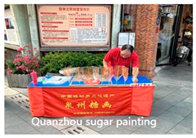 | Cultural activity |  |
| Traditional festivals | 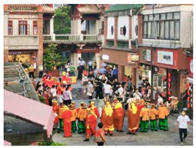 | Preservation of folk culture |  |
| Preservation ofhistorical sites | 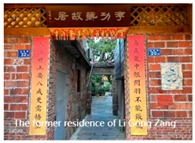 | Preservation of architectural texture | 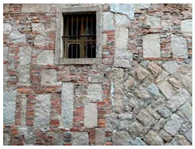 |
| Parking location |  | Trash can facilities |  |
| Leisure facility | 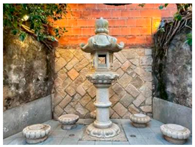 | Landscaping | 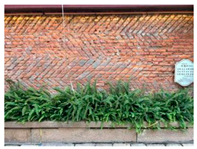 |
| Environmental vignettes |  | Maintenance of facilities | 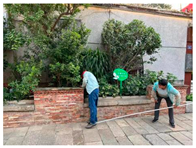 |
| Street environment |  | Public security management | 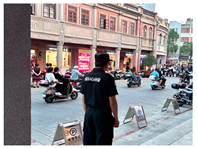 |
| Public health location |  | Personnel flow |  |
| Type of business |  | Business features | 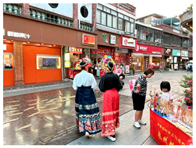 |
| Quality of food and beverage | 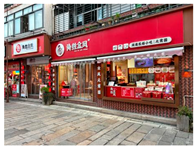 | Neighborhood transportation connections and transitions |  |
| Neighborhood spatial form and scale |  | Architectural preservation |  |
| Architectural style | 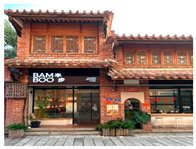 |
References
- Been, V.; Ellen, I.G.; Gedal, M.; Glaeser, E.; McCabe, B.J. Preserving history or restricting development? The heterogeneous effects of historic districts on local housing markets in New York City. J. Urban Econ. 2016, 92, 16–30. [Google Scholar] [CrossRef]
- Smith, M.K.; Robinson, M. (Eds.) Cultural Tourism in a Changing World: Politics, Participation and (Re) Presentation; Channel View Publications: Bristol, UK, 2006; Volume 7. [Google Scholar]
- Zhao, Y.; Liu, J.; Zheng, Y. Preservation and renewal: A study on visual evaluation of urban historical and cultural street landscape in Quanzhou. Sustainability 2022, 14, 8775. [Google Scholar] [CrossRef]
- van der Cammen, H.; Burtenshaw, D.; Bateman, M.; Ashworth, G.J. The European City: A Western Perspective (Book Review). Town Plan. Rev. 1992, 63, 447. [Google Scholar]
- Xie, S.; Gu, K.; Zhang, X. Urban conservation in China in an international context: Retrospect and prospects. Habitat Int. 2020, 95, 102098. [Google Scholar] [CrossRef]
- ICOMOS. The Valletta Principles for the Safeguarding and Management of Historic Cities, Towns and Urban Areas; CIVVIH: Athen, Greece, 2011. [Google Scholar]
- JNESCO. Culture:Urban Future. [R/OL]. Available online: http://openarchive.icomos.org/1816/1/245999e.pdf (accessed on 18 May 2019).
- Zhou, Y. Research on the Redesign of Historical Streets and Alleys in Changsha City Based on Sense of Place. Master’s Thesis, Chongqing University, Chongqing, China, 2020. [Google Scholar]
- Chen, C. Research on the Redesign of Historical Streets and Alleys Based on Thermal Comfort Evaluation. Master’s Thesis, Jiangsu University, Zhenjiang, China, 2022. [Google Scholar]
- Zhang, C.; Li, X. Urban redevelopment as multi-scalar planning and contestation: The case of Enning Road project in Guangzhou, China. Habitat Int. 2016, 56, 157–165. [Google Scholar] [CrossRef]
- Yan, L. Research on Historical District Renewal Strategies Based on Integrated Symbiosis Theory. Master’s Thesis, Qingdao University of Science and Technology, Qingdao, China, 2023. [Google Scholar]
- Wang, Z.; Tong, H.; Hou, Y. Protection and Renewal of Streets and Alleys in Traditional Historic Districts—A Case Study of Xiaosongtao Lane in Nanjing. Urban Archit. 2022, 19, 35–38. [Google Scholar] [CrossRef]
- Tapak, L.; Abbasi, H.; Mirhashemi, H. Assessment of factors affecting tourism satisfaction using K-nearest neighborhood and random forest models. BMC Res. Notes 2019, 12, 749. [Google Scholar] [CrossRef]
- Taghavi, M.; Soleimani, A.G. The factors influencing the growth of the tourism industry. Econ. Res. 2017, 3, 8. [Google Scholar]
- Nahid, E.B.; Akbar, A.N.D. The effects of the mental image of isfahan tourists on the development of tourism. J. Tour. Manag. Stud. 2016, 31, 109–125. [Google Scholar]
- Sun, T.; Li, Y.; Tai, H. Different cultures, different images: A comparison between historic conservation area destination image choices of Chinese and Western tourists. J. Tour. Cult. Chang. 2023, 21, 110–127. [Google Scholar] [CrossRef]
- Chen, J.; Wu, Z.; Lin, S. The influence of neighborhood quality on tourism in China: Using Baidu Street View pictures and deep learning techniques. PLoS ONE 2022, 17, e0276628. [Google Scholar] [CrossRef]
- Chen, F. Interpreting urban micromorphology in China: Case studies from Suzhou. Urban Morphol. 2012, 16, 133. [Google Scholar] [CrossRef]
- Freedman, A. Approach to Environment Design; Plenum Press: New York, NY, USA, 1990; pp. 11–18. [Google Scholar]
- Dheah Hameed, B.; Zina, R.A. Transformation of urban morphology, vulnerability and resilience: Haifa Street Area, as a case study. Ain Shams Eng. J. 2022, 13, 101718. [Google Scholar] [CrossRef]
- Zhang, J.; Zheng, B. Research on the historical evolution of urban street morphology under the background of big data and Internet of Things. J. Comput. Methods Sci. Eng. Prepr. 2023, 23, 2401–2411. [Google Scholar] [CrossRef]
- Turkan, Z. Sustainability in the Formation and Development of Historical Cities: “Nicosia Historical City Texture”. Eur. J. Sustain. Dev. 2020, 9, 250. [Google Scholar] [CrossRef]
- Choi, M.-H.; Hyun, T.-S. A Study on the Formation of Roadside Buildings Considering the Landscape Characteristics of Gyeongju City. J. Korean Rural Archit. Soc. 2008, 10, 83–92. [Google Scholar]
- Weninger, M.; Makor, L.; Mössenböck, H. Memory cities: Visualizing heap memory evolution using the software city metaphor. In Proceedings of the 2020 Working Conference on Software Visualization (VISSOFT), Adelaide, SA, Australia, 28 September–2 October 2020. [Google Scholar]
- Ahn, S.-M.; Son, K.-H.; Choi, I.-Y. Analysis of the Components and Color Characteristics of Historical and Cultural Streets: Focused on Gaya Street in Gimhae City. J. Korea Sci. Art Converg. Soc. 2015, 20, 255–265. [Google Scholar]
- Bulut, Y.; Atabeyoğlu, Ö. Fountains as urban furniture in historical urban structure and usage culture: Erzurum City case. Build. Environ. 2007, 42, 2432–2438. [Google Scholar] [CrossRef]
- Shih, N.-J.; Qiu, Y.-H. Nested Fabric Adaptation to New Urban Heritage Development. Remote Sens. 2023, 15, 2694. [Google Scholar] [CrossRef]
- Zhang, J.; Zhang, J.; Yu, S.; Zhou, J. The Sustainable development of street texture of historic and cultural districts―A case study in Shichahai District, Beijing. Sustainability 2018, 10, 2343. [Google Scholar] [CrossRef]
- Zhou, X.; Zhang, X.; Dai, Z.; Hermaputi, R.L.; Hua, C.; Li, Y. Spatial layout and coupling of urban cultural relics: Analyzing historical sites and commercial facilities in district iii of Shaoxing. Sustainability 2021, 13, 6877. [Google Scholar] [CrossRef]
- Tutuko, P.; Bonifacius, N.; Yuniawan, D.; Aini, N.; Shen, Z.; Bin Mohamad, E.; Yamato, Y.; Sulaksono, A.G. The Pattern of Land Use Integration in Historic Areas in the CBD Zone: Comparative Study of Space Syntax Attributes of Malang, Melaka, and Kanazawa. Int. Rev. Spat. Plan. Sustain. Dev. 2022, 10, 148–169. [Google Scholar] [CrossRef] [PubMed]
- Xu, Y.; Tong, H.; Chen, M.; Rollo, J.; Zhang, R. Examining the Urban Regeneration of Public Cultural Space Using Multi-Scale Geospatial Data: A Case Study of the Historic District in Jinan, China. Front. Built Environ. 2023, 9, 1328157. [Google Scholar] [CrossRef]
- Dai, L.; Wang, S.; Xu, J.; Wan, L.; Wu, B. Qualitative analysis of residents′ perceptions of tourism impacts on historic districts: A case study of nanluoguxiang in Beijing, China. J. Asian Archit. Build. Eng. 2017, 16, 107–114. [Google Scholar] [CrossRef]
- Zhu, X.; Chiou, S.-C. A study on the sustainable development of historic district landscapes based on place attachment among tourists: A case study of Taiping old street, Taiwan. Sustainability 2022, 14, 11755. [Google Scholar] [CrossRef]
- Liang, F.; Pan, Y.; Gu, M.; Liu, Y.; Lei, L. Research on the paths and strategies of the integrated development of culture and tourism industry in urban historical blocks. Front. Public Health 2022, 10, 1016801. [Google Scholar] [CrossRef] [PubMed]
- Pezeshki, F.; Khodadadi, M.; Bagheri, M. Investigating community support for sustainable tourism development in small heritage sites in Iran: A grounded theory approach. Int. J. Herit. Stud. 2023, 29, 773–791. [Google Scholar] [CrossRef]
- Harper, D. Office design: A study of environment. Build. Sci. 1966, 1, 317–319. [Google Scholar] [CrossRef]
- Rutledge, A.J. A Visual Approach to Park Design; Wiley: New York, NY, USA, 1985. [Google Scholar]
- Bechtel, R.B.; Marans, R.W.; Michelson, W.E. Methods in Environmental and Behavioral Research; Van Nostrand Reinhold Co: Malabar, FL, USA, 1987. [Google Scholar]
- Preiser, W.F.E.; White, E.; Rabinowitz, H. Post-Occupancy Evaluation; Van Nostrand Reinhold Company: New York, NY, USA, 1988. [Google Scholar]
- Baird, G. Building Evaluation Techniques; McGraw-Hill: New York, NY, USA, 1996; pp. 58–68. [Google Scholar]
- Aksah, H. Post Occupancy Evaluation on Refurbished Historicalgovernment Buildings in Metropolitan City of Kuala Lumpur. Ph.D. Thesis, Universiti Teknologi MARA, Shah Alam, Malaysia, 2011. [Google Scholar]
- Li, P.; Froese, T.M.; Brager, G. Post-occupancy evaluation: State-of-the-art analysis and state-of-the-practice review. Build. Environ. 2018, 133, 187–202. [Google Scholar] [CrossRef]
- Choi, K.-L. Urban Regeneration into Commercial Hub through Public Design Projects: A Case Study of Busan City’s ‘Gwangbok-ro Cultural Street’. Arch. Des. Res. 2013, 26, 231–265. [Google Scholar]
- Koo, M.-A.; Eom, B.-H. Post Occupancy Evaluation of Image and Satisfaction for Storytelling Theme on the Kim Gwang-Seok Street. J. Korean Inst. Landsc. Archit. 2018, 46, 59–68. [Google Scholar] [CrossRef]
- Maisel, J.L.; Baek, S.-R.; Choi, J. Evaluating users’ perceptions of a Main Street corridor: Before and after a Complete Street project. J. Transp. Health 2021, 23, 101276. [Google Scholar] [CrossRef]
- Kaplan, R. Citizen participation in the design and evaluation of a park. Environ. Behav. 1980, 12, 494–507. [Google Scholar] [CrossRef]
- Marcus, C.C.; Barnes, M. (Eds.) Healing Gardens: Therapeutic Benefits and Design Recommendations; John Wiley & Sons: Hoboken, NJ, USA, 1999; Volume 4. [Google Scholar]
- Shepley, M.M.; Wilson, P. Designing for persons with AIDS: A post-occupancy study at the Bailey-Boushay House. J. Archit. Plan. Res. 1999, 16, 17–32. [Google Scholar]
- Whitehouse, S.; Varni, J.W.; Seid, M.; Cooper-Marcus, C.; Ensberg, M.J.; Jacobs, J.R.; Mehlenbeck, R.S. Evaluating a children’s hospital garden environment: Utilization and consumer satisfaction. J. Environ. Psychol. 2001, 21, 301–314. [Google Scholar] [CrossRef]
- Chon, K.-S. Understanding recreational traveler’s motivation, attitude and satisfaction. Tour. Rev. 1989, 44, 3–7. [Google Scholar] [CrossRef]
- Chi, C.G.-Q.; Qu, H. Examining the structural relationships of destination image, tourist satisfaction and destination loyalty: An integrated approach. Tour. Manag. 2008, 29, 624–636. [Google Scholar] [CrossRef]
- Li, X.; Petrick, J.F. Examining the antecedents of brand loyalty from an investment model perspective. J. Travel Res. 2008, 47, 25–34. [Google Scholar] [CrossRef]
- Yoon, Y.; Uysal, M. An examination of the effects of motivation and satisfaction on destination loyalty: A structural model. Tour. Manag. 2005, 26, 45–56. [Google Scholar] [CrossRef]
- Beard, J.G.; Ragheb, M.G. Measuring Leisure Satisfaction. J. Leis. Res. 1980, 12, 20–33. [Google Scholar] [CrossRef]
- Del, B.; Rodríguez, I.; Martín, H.S. Tourist satisfaction a cognitive-affective model. Ann. Tour. Res. 2008, 35, 551–573. [Google Scholar]
- Mutanga, C.N.; Vengesayi, S.; Chikuta, O.; Muboko, N.; Gandiwa, E. Travel motivation and tourist satisfaction with wildlife tourism experiences in Gonarezhou and Matusadona National Parks, Zimbabwe. J. Outdoor Recreat. Tour. 2017, 20, 1–18. [Google Scholar] [CrossRef]
- Suhartanto, D.; Dean, D.; Gan, C.; Suwatno; Chen, B.T.; Michael, A. An examination of satisfaction towards online motorcycle taxis at different usage levels. Case Stud. Transp. Policy 2020, 8, 984–991. [Google Scholar] [CrossRef]
- Han, X.; Liu, A.; Liu, M. Noise Perception and Its Effects on Tourists’ Satisfaction: A Case Study of Nanluoguxiang Lane in Beijing. In INTER-NOISE and NOISE-CON Congress and Conference Proceedings; No. 7; Institute of Noise Control Engineering: Hong Kong, China, 2017; Volume 255. [Google Scholar]
- Barrera-Fernández, D.; Hernández-Escampa, M. Walkability in the historic city of Oaxaca, Mexico. Event Manag. 2019, 23, 573–598. [Google Scholar] [CrossRef]
- Ko, Y.-T. Optimizing tour route planning for old streets-the case of taichung nantun old street in Taiwan. Tour. Anal. 2023, 28, 487–503. [Google Scholar] [CrossRef]
- Chang, K.-C. Examining the effect of tour guide performance, tourist trust, tourist satisfaction, and flow experience on tourists’ shopping behavior. Asia Pac. J. Tour. Res. 2014, 19, 219–247. [Google Scholar] [CrossRef]
- Kim, S.; Kim, K.; Kim, J. Empirical study on user satisfaction and intention to continue using traditional markets: Targeting alley-type markets in Seoul. Resid. Environ. 2019, 17, 23–44. [Google Scholar]
- Park, S.; Hwang, D.; Lee, W.S.; Heo, J. Influence of nostalgia on authenticity, satisfaction, and revisit intention: The case of Jidong mural alley in Korea. Int. J. Hosp. Tour. Adm. 2020, 21, 440–455. [Google Scholar] [CrossRef]
- Lawley, D.N.; Maxwell, A.E. Factor analysis as a statistical method. J. R. Stat. Soc. Ser. D Stat. 1962, 12, 209–229. [Google Scholar] [CrossRef]
- Liu, H.; Liu, Y.; Guo, X.; Wu, H.; Wang, H.; Liu, Y. An energy consumption prediction method for HVAC systems using energy storage based on time series shifting and deep learning. Energy Build. 2023, 298, 113508. [Google Scholar] [CrossRef]
- Oh, H. Revisiting importance–performance analysis. Tour. Manag. 2001, 22, 617–627. [Google Scholar] [CrossRef]
- Matzler, K.; Bailom, F.; Hinterhuber, H.H.; Renzl, B.; Pichler, J. The asymmetric relationship between attribute-level performance and overall customer satisfaction: A reconsideration of the importance–performance analysis. Ind. Mark. Manag. 2004, 33, 271–277. [Google Scholar] [CrossRef]
- Xu, C. The modified importance-performance analysis method and its application in tourist satisfaction research. Tour. Trib./Lvyou Xuekan 2013, 28, 59. [Google Scholar]
- Kallio, H.; Pietilä, A.M.; Johnson, M.; Kangasniemi, M. Systematic methodological review: Developing a framework for a qualitative semi-structured interview guide. J. Adv. Nurs. 2016, 72, 2954–2965. [Google Scholar] [CrossRef] [PubMed]
- Osgood, C.E.; Suci, G.J.; Tannenbaum, P.H. The Measurement of Meaning (No. 47); University of Illinois Press: Champaign, IL, USA, 1957. [Google Scholar]
- Kaunda-Khangamwa, B.N.; Maposa, I.; Dambe, R.; Malisita, K.; Mtagalume, E.; Chigaru, L.; Munthali, A.; Chipeta, E.; Phiri, S.; Manderson, L. Validating a child youth resilience measurement (CYRM-28) for adolescents living with HIV (ALHIV) in urban Malawi. Front. Psychol. 2020, 11, 1896. [Google Scholar] [CrossRef] [PubMed]
- Taber, K.S. The use of Cronbach’s alpha when developing and reporting research instruments in science education. Res. Sci. Educ. 2018, 48, 1273–1296. [Google Scholar] [CrossRef]
- Xia, S.; Liu, B.; Wang, H. Construction of a Sustainability-Based Building Attribute Conservation Assessment Model in Historic Areas. Buildings 2022, 12, 1346. [Google Scholar] [CrossRef]
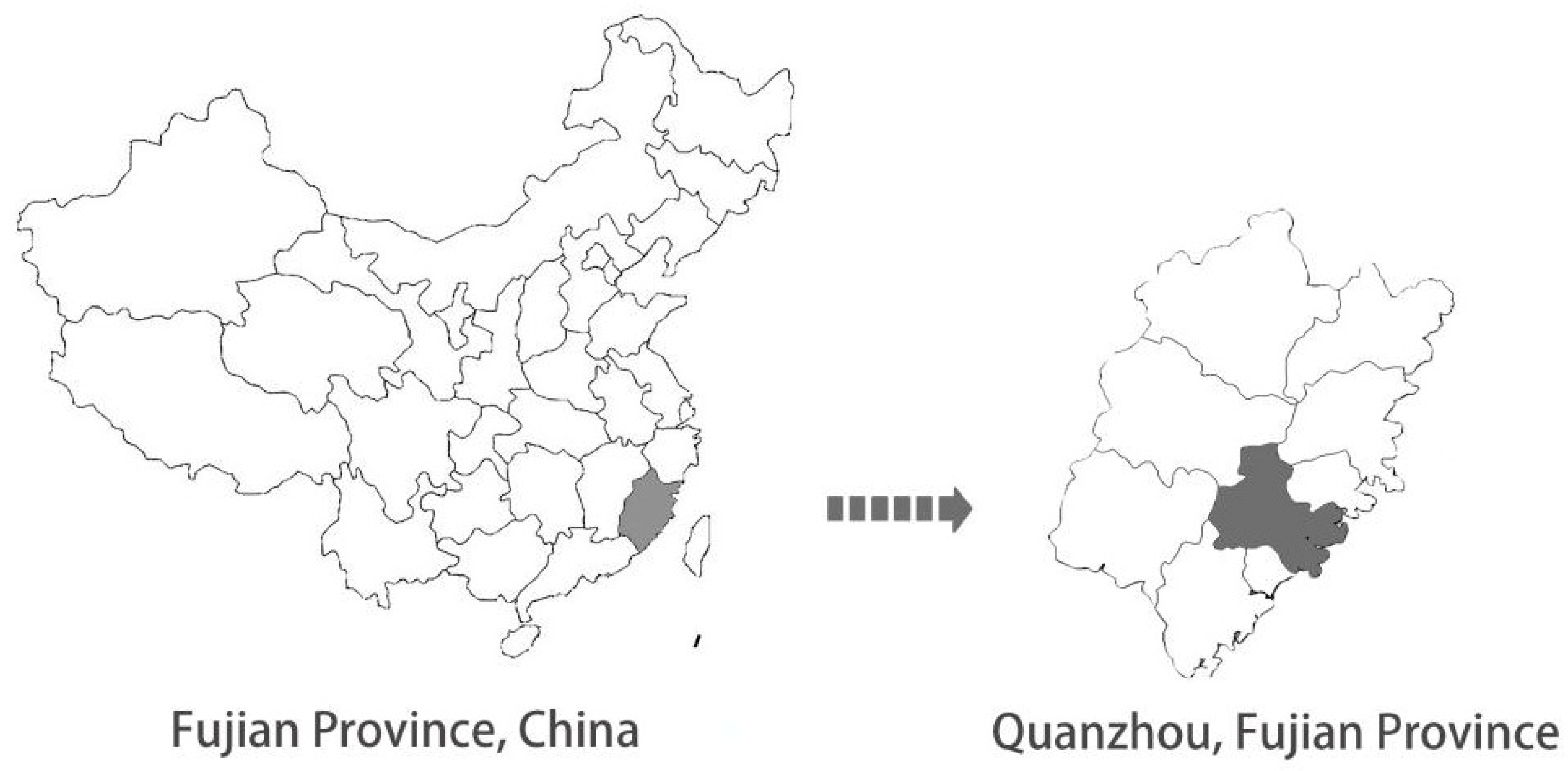
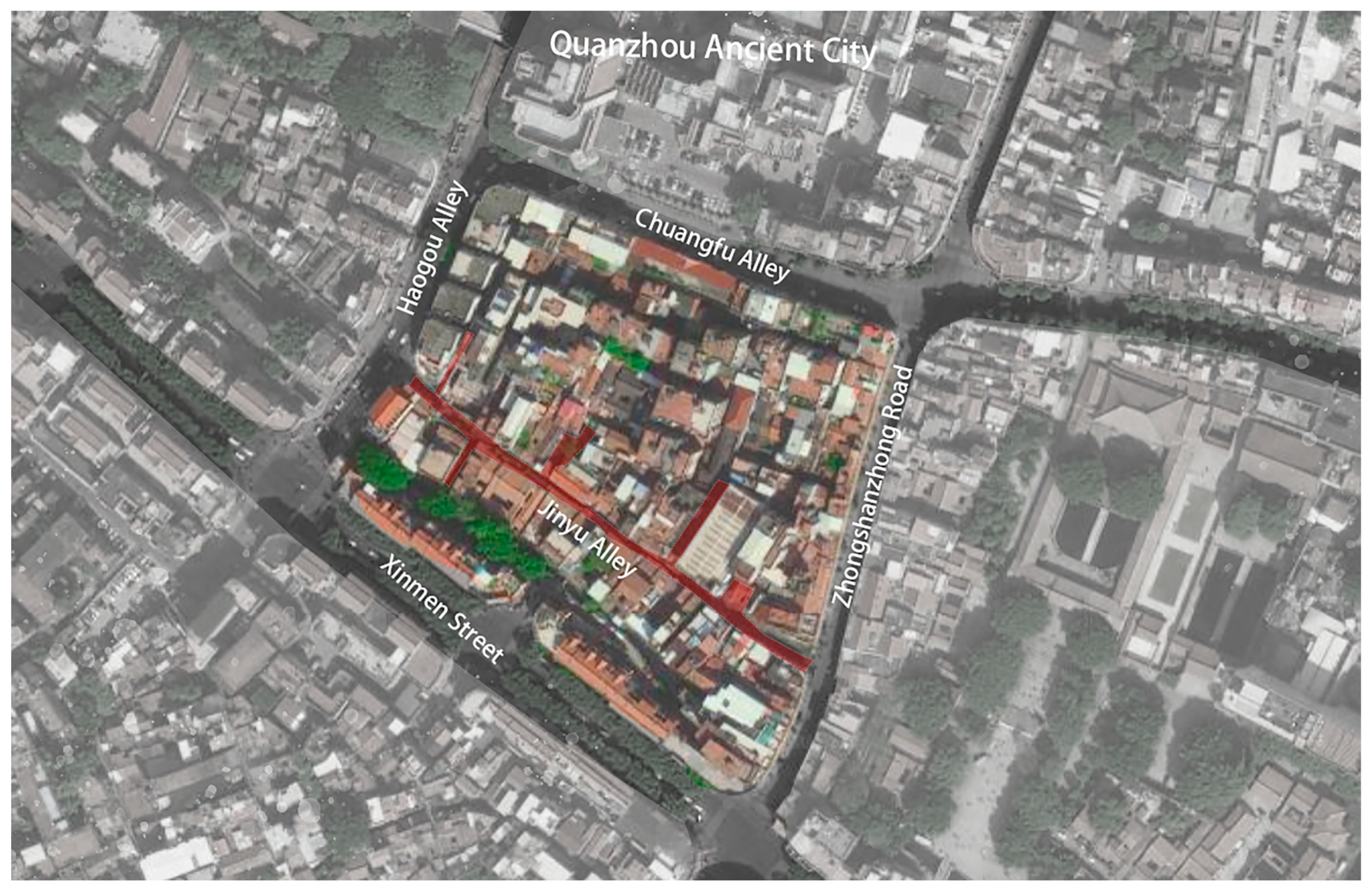
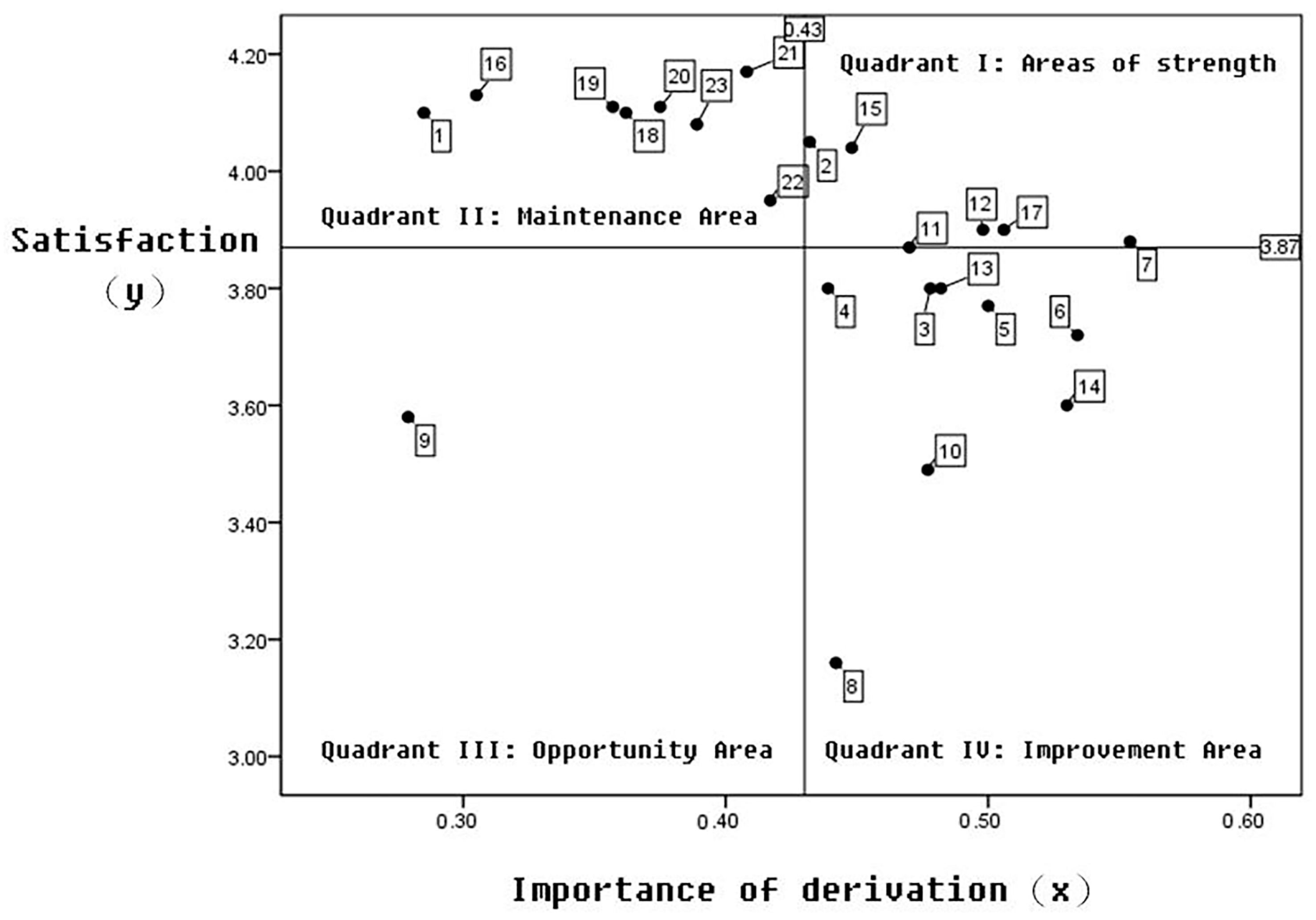
| Phase | Time | Document | Related Content |
|---|---|---|---|
| Preservation | 1913 | Historical Monuments Law | It comprises four aspects: the definition and classification of historical relics; the protection and restoration of historical relics; the registration and management of historical relics; and the utilization and opening of historical relics. |
| 1930 | Landscape Protection Law | Provinces are required to establish a system for registering key natural monuments and historical relics for protection. Once included in the heritage list, they shall not be arbitrarily damaged or altered in appearance without approval from the Ministry of Culture. | |
| 1964 | Venice Charter | Encouragement is given for urban development and construction, along with the stipulation of principles for building and land use. Emphasis is placed on the importance of environmental protection, and measures for conserving natural resources and ecological environments are outlined. | |
| Protection | 1975 | Amsterdam Declaration | The preservation and enhancement of architectural heritage are inseparable from the economic, social, and cultural factors that constitute its environment. |
| 1976 | Nairobi Recommendation | Encouraging frozen protection akin to museums is not advocated; instead, the preservation of historical areas is considered an integral part of urban development strategy. | |
| 1987 | Washington Charter | The significance and role of protecting historical districts, as well as larger historical towns, and the principles and methods of conservation in urban areas have been defined. | |
| Safeguarding | 1999 | Beijing Charter | The construction of human settlements emphasizes the integration of technology and humanities, as well as the multi-layered technical construction, ultimately leading to the integration of architecture, landscape architecture, and urban planning. |
| 2005 | Xi’an Declaration | The scope of cultural heritage conservation extends to the surrounding environment and encompasses all historical, social, spiritual, customary, economic, and cultural activities within that environment. Emphasizing the spiritual and humanistic aspects, it encompasses not only the surrounding physical environment but also intangible cultural heritage, such as customs and traditions embedded in history. | |
| 2011 | Recommendation on the Historic Urban Landscape | Taking a dynamic perspective on human activities in urban spaces across different periods and considering it as a comprehensive system, it provides insights into urban cultural heritage. This approach emphasizes both historical contexts and contemporary developments. | |
| 2011 | Valletta Principles | Maintenance of historical towns, urban areas, and their surrounding environments involves implementing necessary procedures for their protection, preservation, enhancement, and management, as well as ensuring their coherent development and harmonious adaptation to contemporary life. |
| Reconstruction Direction | Concrete Performance | Reconstruction Direction | Concrete Performance |
|---|---|---|---|
| Building restoration | 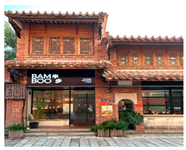 | Ground restoration | 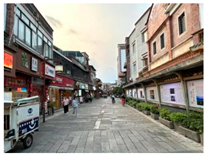 |
| Wall restoration |  | The maritime shell-washed stone style | 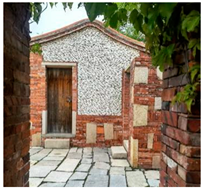 |
| Stone incorporation | 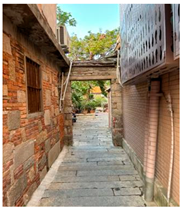 | Facade rectification |  |
| Gold fish patterned totems | 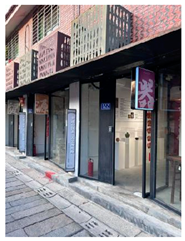 | Delicate Lattice windows | 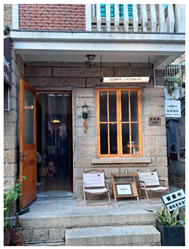 |
| Interview Scope | Involved Factor | Positive Emotion | Negative Emotion |
|---|---|---|---|
| Comfort | Traffic location | 4 | 8 |
| Public facilities | 10 | 2 | |
| Community management | 9 | 3 | |
| Privacy | Private need | 4 | 8 |
| Attribution | Sense of belonging | 10 | 2 |
| Resident benefit | Economic income | 10 | 2 |
| Living standard | 9 | 3 | |
| Convenient life | 10 | 2 |
| Interview Scope | Involved Factor | Positive Emotion | Negative Emotion |
|---|---|---|---|
| Characteristic | Architectural feature | 42 | 7 |
| Folk culture | 39 | 10 | |
| Nongenetic inheritance | 40 | 9 | |
| Street greening | 25 | 24 | |
| Commercial form | 26 | 23 | |
| Interactivity | Experience intangible cultural heritage | 32 | 17 |
| Watch cultural events | 37 | 12 | |
| Convenience | Transportation accessibility | 24 | 25 |
| Infrastructure | 40 | 9 |
| Serial Number | Evaluation Indicators | Description of SD Evaluation Indicators |
|---|---|---|
| 1 | Architectural style | Architectural unity-Architectural chaos |
| 2 | Architectural preservation | Buildings in good condition - Buildings in poor condition |
| 3 | Neighborhood transportation connections and transitions | Neighborhood transportation connections and transitions that make sense-Neighborhood transportation connections and transitions that do not make sense |
| 4 | Neighborhood spatial form and scale | Neighborhoods with good spatial form and scale-Neighborhoods with less spatial form and scale |
| 5 | Landscaping | Landscape with rich greenery - Landscape with single greenery |
| 6 | Environmental vignettes | Environmental vignettes special - Environmental vignettes ordinary |
| 7 | Public health location | Conveniently located public health - Distantly located public health |
| 8 | Parking location | Convenient parking location - Distant parking location |
| 9 | Leisure facility | Leisure-rich-Leisure-unique |
| 10 | Trash can facilities | Low density of dumpster facilities - High density of dumpster facilities |
| 11 | Personnel flow | High flow of personnel- Low flow of personnel |
| 12 | Business Features | Commercial features with strong appeal - Commercial features with weak appeal |
| 13 | Quality of food and beverage | Catering quality attractive strong-Catering quality attractive weak |
| 14 | Type of business | Variety of business-Single type |
| 15 | Traditional festivals | Traditional festivals with good atmosphere - Traditional festivals with weak atmosphere |
| 16 | Non-genetic inheritance | Those who attach importance to non-genetic inheritance - Those who do not attach importance to non-genetic inheritance |
| 17 | Cultural activity | Culturally enriched-Culturally unenriched |
| 18 | Preservation of historical sites | Historic sites well preserved-Historic sites not preserved |
| 19 | Preservation of architectural texture | Well-preserved architectural texture - Missing architectural texture |
| 20 | Preservation of folk culture | Folklore culture emphasized - Folklore culture not emphasized |
| 21 | Street environment | Clean street environment - Dirty street environment |
| 22 | Maintenance of facilities | Timely maintenance of facilities - Delayed maintenance of facilities |
| 23 | Public security management | Well policed- Poorly policed |
| KMO Measurement Sampling Adequacy | 0.912 | |
|---|---|---|
| Bartlett’s spherical test | Chi-square last read | 2281.570 |
| Degrees of freedom | 253 | |
| Significance | 0 | |
| Cronbach’s Alpha | Number of Terms |
|---|---|
| 0.935 | 23 |
| Elements | Initial Eigenvalue | Extracted Sum of Squared Loads | Rotating Load Sum of Squares | ||||||
|---|---|---|---|---|---|---|---|---|---|
| Total | Variance Contribution Rate (%) | Grand Total (%) | Total | Variance Contribution Rate (%) | Grand Total (%) | Total | Variance Contribution Rate (%) | Grand Total (%) | |
| 1 | 9.037 | 39.292 | 39.292 | 9.037 | 39.292 | 39.292 | 4.006 | 17.416 | 17.416 |
| 2 | 1.785 | 7.761 | 47.053 | 1.785 | 7.761 | 47.053 | 2.841 | 12.353 | 29.769 |
| 3 | 1.502 | 6.529 | 53.582 | 1.502 | 6.529 | 53.582 | 2.782 | 12.095 | 41.864 |
| 4 | 1.224 | 5.321 | 58.904 | 1.224 | 5.321 | 58.904 | 2.502 | 10.877 | 52.741 |
| 5 | 1.045 | 4.545 | 63.449 | 1.045 | 4.545 | 63.449 | 2.463 | 10.708 | 63.449 |
| Evaluation Indicators | Factor | ||||
|---|---|---|---|---|---|
| 1 | 2 | 3 | 4 | 5 | |
| Non-genetic inheritance | 0.769 | - | - | - | - |
| Cultural activity | 0.754 | - | - | - | - |
| Traditional festivals | 0.743 | - | - | - | - |
| Preservation of folk culture | 0.658 | - | - | - | - |
| Preservation of historical sites | 0.639 | - | - | - | - |
| Preservation of architectural texture | 0.617 | - | - | - | - |
| Parking location | 0.748 | - | - | - | |
| Trash can facilities | 0.718 | - | - | - | |
| Leisure facility | 0.688 | - | - | - | |
| Landscaping | 0.598 | - | - | - | |
| Environmental vignettes | 0.561 | - | - | - | |
| Maintenance of facilities | 0.773 | - | |||
| Street environment | 0.764 | - | - | ||
| Public security management | 0.757 | - | - | ||
| Public health location | 0.572 | - | - | ||
| Personnel flow | 0.760 | - | |||
| Business features | 0.684 | - | |||
| Type of business | 0.658 | - | |||
| Quality of food and beverage | 0.606 | - | |||
| Neighborhood transportation connections and transitions | 0.735 | ||||
| Neighborhood spatial form and scale | 0.716 | ||||
| Architectural preservation | 0.630 | ||||
| Architectural style | 0.603 | ||||
| Serial Number | Evaluation Indicators | Satisfaction |
|---|---|---|
| 1 | Architectural style | 4.10 |
| 2 | Architectural preservation | 4.05 |
| 3 | Neighborhood transportation connections and transitions | 3.80 |
| 4 | Neighborhood spatial form and scale | 3.80 |
| 5 | Landscaping | 3.77 |
| 6 | Environmental vignettes | 3.72 |
| 7 | Public health location | 3.88 |
| 8 | Parking location | 3.16 |
| 9 | Leisure facility | 3.58 |
| 10 | Trash can facilities | 3.49 |
| 11 | Personnel flow | 3.87 |
| 12 | Business features | 3.90 |
| 13 | Quality of food and beverage | 3.80 |
| 14 | Type of business | 3.60 |
| 15 | Traditional festivals | 4.04 |
| 16 | Non-genetic inheritance | 4.13 |
| 17 | Cultural activity | 3.90 |
| 18 | Preservation of historical sites | 4.10 |
| 19 | Preservation of architectural texture | 4.11 |
| 20 | Preservation of folk culture | 4.11 |
| 21 | Street environment | 4.17 |
| 22 | Maintenance of facilities | 3.95 |
| 23 | Public security management | 4.08 |
| Serial Number | Evaluation Indicators | NO. | Satisfaction | Elicited Importance |
|---|---|---|---|---|
| 1 | Architectural style | 1 | 4.10 | 0.285 |
| 2 | Architectural preservation | 2 | 4.05 | 0.432 |
| 3 | Neighborhood transportation connections and transitions | 3 | 3.80 | 0.478 |
| 4 | Neighborhood spatial form and scale | 4 | 3.80 | 0.439 |
| 5 | Landscaping | 5 | 3.77 | 0.500 |
| 6 | Environmental vignettes | 6 | 3.72 | 0.534 |
| 7 | Public health location | 7 | 3.88 | 0.554 |
| 8 | Parking location | 8 | 3.16 | 0.442 |
| 9 | Leisure facility | 9 | 3.58 | 0.279 |
| 10 | Trash can facilities | 10 | 3.49 | 0.477 |
| 11 | Personnel flow | 11 | 3.87 | 0.470 |
| 12 | Business features | 12 | 3.90 | 0.498 |
| 13 | Quality of food and beverage | 13 | 3.80 | 0.482 |
| 14 | Type of business | 14 | 3.60 | 0.530 |
| 15 | Traditional festivals | 15 | 4.04 | 0.448 |
| 16 | Non-genetic inheritance | 16 | 4.13 | 0.305 |
| 17 | Cultural activity | 17 | 3.90 | 0.506 |
| 18 | Preservation of historical sites | 18 | 4.10 | 0.362 |
| 19 | Preservation of architectural texture | 19 | 4.11 | 0.357 |
| 20 | Preservation of folk culture | 20 | 4.11 | 0.375 |
| 21 | Street environment | 21 | 4.17 | 0.408 |
| 22 | Maintenance of facilities | 22 | 3.95 | 0.417 |
| 23 | Public security management | 23 | 4.08 | 0.389 |
| Primary Evaluation Indicators | Secondary Evaluation Indicators | NO. | Q1 | Q2 | Q3 | Q4 |
|---|---|---|---|---|---|---|
| Neighborhood Spatial | Architectural style | 1 | ✔ | |||
| Architectural preservation | 2 | ✔ | ||||
| Neighborhood transportation connections and transitions | 3 | ✔ | ||||
| Neighborhood spatial form and scale | 4 | ✔ | ||||
| Supporting facilities | Landscaping | 5 | ✔ | |||
| Environmental vignettes | 6 | ✔ | ||||
| Parking location | 8 | ✔ | ||||
| Leisure facility | 9 | ✔ | ||||
| Trash can facilities | 10 | ✔ | ||||
| Commercial environment | Personnel flow | 11 | ✔ | |||
| Business features | 12 | ✔ | ||||
| Quality of food and beverage | 13 | ✔ | ||||
| Type of business | 14 | ✔ | ||||
| Historical context | Traditional festivals | 15 | ✔ | |||
| Non-genetic inheritance | 16 | ✔ | ||||
| Cultural activity | 17 | ✔ | ||||
| Preservation of historical sites | 18 | ✔ | ||||
| Preservation of architectural texture | 19 | ✔ | ||||
| Preservation of folk culture | 20 | ✔ | ||||
| Operational management | Public health location | 7 | ✔ | |||
| Street environment | 21 | ✔ | ||||
| Maintenance of facilities | 22 | ✔ | ||||
| Public security management | 23 | ✔ |
Disclaimer/Publisher’s Note: The statements, opinions and data contained in all publications are solely those of the individual author(s) and contributor(s) and not of MDPI and/or the editor(s). MDPI and/or the editor(s) disclaim responsibility for any injury to people or property resulting from any ideas, methods, instructions or products referred to in the content. |
© 2024 by the authors. Licensee MDPI, Basel, Switzerland. This article is an open access article distributed under the terms and conditions of the Creative Commons Attribution (CC BY) license (https://creativecommons.org/licenses/by/4.0/).
Share and Cite
Song, Y.; Han, C.; Zhao, Y. A Study on Tourist Satisfaction Based on the Conservation and Reuse of Alleyway Spaces in Urban Historic Neighborhoods. Buildings 2024, 14, 1324. https://doi.org/10.3390/buildings14051324
Song Y, Han C, Zhao Y. A Study on Tourist Satisfaction Based on the Conservation and Reuse of Alleyway Spaces in Urban Historic Neighborhoods. Buildings. 2024; 14(5):1324. https://doi.org/10.3390/buildings14051324
Chicago/Turabian StyleSong, Yimin, Chenqi Han, and Yang Zhao. 2024. "A Study on Tourist Satisfaction Based on the Conservation and Reuse of Alleyway Spaces in Urban Historic Neighborhoods" Buildings 14, no. 5: 1324. https://doi.org/10.3390/buildings14051324
APA StyleSong, Y., Han, C., & Zhao, Y. (2024). A Study on Tourist Satisfaction Based on the Conservation and Reuse of Alleyway Spaces in Urban Historic Neighborhoods. Buildings, 14(5), 1324. https://doi.org/10.3390/buildings14051324




